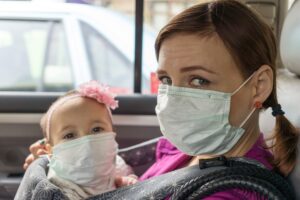Could a natural disaster put a dent in your income?
The answer is probably “yes”—but there’s something you can do about it
The news is routinely filled with proof Mother Nature is a force to be reckoned with. Don’t think your livelihood could be affected by the disaster du jour? We have bad news: You could be wrong.
It’s not just farmers or West Coast homeowners that need to be worried about the wrath of nature; we all do. Natural disasters can shut off the power, stop people from getting to work, destroy homes and businesses and so much more. And given today’s interconnected economy, a disaster on the other side of the country, or even the other side of the world, could still impact your livelihood.
What’s the deal with 100-year floods? Scratching your head about the near-annual occurrence of 100-year floods? You’re not alone. According to the experts at the United States Geological Survey, here’s what that descriptor really means. And the incidence of such floods is increasing in some parts of the country. According to Ning Lin, associate professor of civil and environmental engineering at Princeton University, “The historical 100-year floods may change to one-year floods in northern coastal towns in the U.S.”[1]
How did your income weather these storms?

Source: https://www.investopedia.com/financial-edge/0311/the-financial-effects-of-a-natural-disaster.aspx
Note that three of the most damaging storms happened in the last two years. It’s sobering to imagine what lies ahead.
The ripple effect is real. Here are just a few examples.
Hits to California tend to hit the entire country. You might not live in the Golden State, but as the world’s fifth-largest economy[2]—and a huge source of food and shipping for the rest of the U.S.—anything that affects California, probably affects you too. The state is often described as being overdue for a massive quake and “weather whiplash” events—rapid and extreme swings from wet to dry—are expected to double in southern California by the end of the century.[3]
Bad weather affects consumers at multiple levels. Think back to the last round of really bad weather. Did you head out for a shopping trip/movie/dinner out/sporting event—or hunker down close to home? Every dollar you didn’t spend likely had far-reaching results. For instance, according to Accuweather, last year’s Polar Vortex added up to a $5 billion hit to the economy.[4]
Natural disasters can hit municipalities hard. Natural disasters can destroy roads, bridges, utilities and communication channels. This can mean a temporary uptick in work for some—like contractors and their suppliers—but can also mean some projects are delayed or never happen.[5]
Businesses feel the pain too. What would happen to your employer if a natural disaster forced them to shut down for a day, a week or longer? Or if you emerged unscathed but your customers took a hit?
Natural disasters can mean a huge negative impact on financial health. Research by the Urban Institute showed a direct link between natural disasters and a broad range of problems related to credit scores, debt, bankruptcy and mortgage foreclosures.[6]
Medium-sized disasters cause the most financial problems. Big disasters get the attention and most of the relief. But research showed those who lived through medium-sized disasters tended to face more financial challenges.[7]
Want to protect your income against disaster? Here’s how.
You can’t stop Mother Nature, but you do have a way to protect your income: insurance. The best coverage will offer protection in three critical areas: disability, involuntary unemployment and salary gap. The first offers protection if you’re in the disaster zone and suffer an injury; the second two shield you from disaster-related job loss or a lower income if a new job pays less than your old one. That last protection can be hard to find, but absolutely crucial, especially if you work in an industry or geographic region that was hard hit. Be sure to do your homework.
Ready to protect your income from Mother Nature?
Wage Protector® could be a great solution.
Its just-right mix of coverage protects your income stream against:
- Disability. Job loss due to injury/illness.
- Involuntary unemployment. Job loss because of outsourcing, natural disaster, strike or lockout, etc.
- Salary gap. Lower income, when a job loss leads to a new job. The policy activates if a new job pays at least 15% less than your previous job, for those with an employer, or 20% less, for self-employed and independent contractors.
To learn why SALARYGAP could be just the coverage you need, visit our contact us page or email bill.jolicoeur@salarygappartners.com.
Wage Protector® and SALARYGAP® are registered trademarks. The use of trademarks without the express prior written consent by SALARYGAP Partners LLC is strictly prohibited.
 Next Post
Next Post



